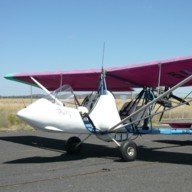I gotta tell you TP, I have a lot of respect for your inputs but you lost me on this last one.
The average bog standard aircraft has a mechanical fuel pump and quite often an electric (boost, auxillary, optional or call it what you will) pump. We are all good pilots and read the flight manual so take off and land with the electric pump on - no issues so far. In cruise, if the engine shuts down for whatever reason we turn on the electric pump and the engine continues to produce power. We could feasibly conclude that the mechanical pump has failed and that is the extent of identifying the underlying problem so that is why I openly stated that it does not matter how the fuel system works because essentially they all work in very similar ways.
I know about floats sinking in boiling fluids within the float chamber and appreciate that it has been aired in this post.
As for the needle valve opening being "a series of opening valve-filling chamber-closing valve-opening valve etc" I think is not entirely correct. At very low power it does happen that way but at cruise power it becomes a process control situation and the needle valve throttles to supply the demand from the float chamber level. Fuel is continually entering the chamber to replace that being sucked up the main jet. As I mentioned earlier, 15 litres fuel flow per hour - Jabiru Flight Manual - is 4 millilitres per second and as the float falls, fuel starts to flow and will maintain the valve opening to provide a constant level in the float chamber. This can be seen from any breed of fuel flow indicator fitted in the aircraft and seems to have started this whole session off.
I also stated that the fuel flow indicator can indicate an increase in fuel flow but not necessarily into the engine - I think that you and other mentioned exactly the same thing. The carby on Jabiru engines is located below the engine so any excess fuel will tend not flow down the throat but would more likely over flow the float bowl as someone else mentioned. I could accept this as being a reasonable cause of the accident that I had to clean up.








